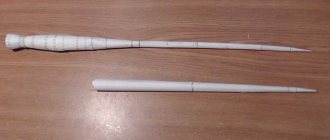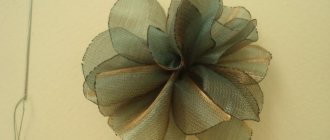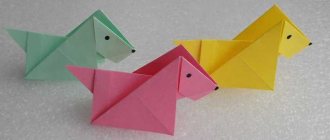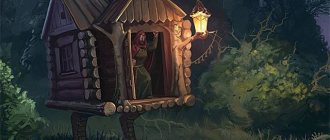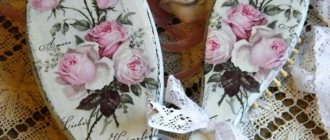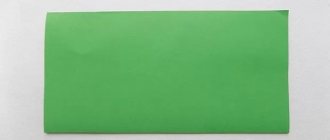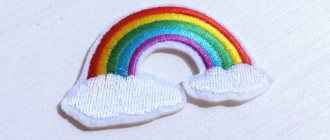A little history
People have long sought to protect their savings from thieves. For this purpose, wooden chests were used, lined with iron for strength. They were more like modern safes. The poor layers of the population put their savings in stockings or clay vessels, egg capsules, which could be sealed and buried for greater safety.
Historians do not have reliable data in which country piggy banks first appeared. Germany, China and Malaysia are mentioned as her homeland. Previously, piggy banks were made mainly in the form of pig figurines. This, in particular, is associated with the fact that in Chinese culture the pig symbolizes prosperity and prosperity.
Types of money boxes
Piggy banks can not only have different appearances and be made from all kinds of materials. Modern ones are divided into several types and according to their functionality.
Modern electronic piggy bank Ernit
Table. Main types of piggy banks.
| View | a brief description of |
| Traditional | The same piggy banks that are discussed in the article. These can be specialized, as well as a variety of containers where a person puts money. Most often these are animal figures. Usually this is a pig, owl, squirrel, dog. It is interesting that each animal in this case is a certain symbol: for example, a dog guards savings, an owl will help you spend them correctly, etc. |
| Electronic | Since technology has come a long way and you can now pay with electronic money or directly from a bank account without cashing it out, you can also save money using virtual methods. Now there are ATM piggy banks that can count the accumulated coins; they have a counter where you can set a certain amount, etc. |
| Magnetic | This is a more advanced regular piggy bank. It is made of wood, and the coins are attached to the “twigs” thanks to magnets. There is a “pot” for banknotes. These piggy banks are reusable. |
| Virtual | Electronic money services such as Yandex. Money or WebMoney offer their users virtual piggy banks. This is a kind of account where the user can add electronic funds until their amount reaches a certain amount, or virtually one can save funds for some purpose. Other users can also top up their account if the person shares the idea of saving with them and provides the account number to which the funds need to be transferred. |
Magnetic piggy bank in the shape of a tree Cute piggy banks, a great option for your child
Space for creativity
You can easily buy a piggy bank, but they are not cheap. Instead of buying, you can make your own piggy bank at home.
Its cost will be very small, because for production you can use materials that are in every home. At the same time, you do not need to have any special skills and you can use your imagination and creativity without restrictions.
You can use plastic bottles, shoe boxes, glass jars, cardboard packaging from various products, soap dishes, etc. as a basis for a homemade money storage. And for decoration, anything is suitable.
There are no rules or standards - there is only imagination and the desire to create. This hobby can even become a source of additional income. Indeed, lately, handmade, handmade goods have become increasingly popular.
The instructions on how to make a piggy bank with your own hands are quite simple. Regardless of what material will be used as the base, there are several steps involved:
- Select material, base;
- Make a hole for coins or paper bills;
- Decorate.
How to make a beautiful piggy bank from a jar
To make a beautiful piggy bank for money, you need to approach the process creatively. If the product is intended as a gift for an event, then a thematic style is preferable. If there is no suitable idea initially, they use everything that is at hand. Lay out decorative decorations on the table, choose a compatible color and style. At the same time, do not forget about accuracy and safety.
How to make a piggy bank from a glass jar
An ordinary glass container makes a decent money box, which can become an interior decoration. To begin, choose two paint colors and prepare a self-adhesive film. It is very convenient to use spray paint for this creativity. This is especially true when a money box is created from a three-liter jar.
- The container is washed and degreased. Dry and put the lid on the jar.
Important! The lid must be screwable.
DIY piggy bank from a plastic jar
From a plastic jar or bottle with a wide neck you can make a piggy bank for money. Children will surely enjoy this process. If the product is to be opaque, it is painted before the creation process begins.
Painting can be done both inside and outside. To paint the inside of a jar, simply pour enough paint into it and rotate it in different directions to distribute it evenly. After this, the jar is opened and given time to dry.
- The container is laid horizontally and a slot is made on one side.
- To make “pig legs”, use parts of an egg tray, cut out the parts and attach them with glue.
- Ears and a tail are cut out of paper, and they are also glued to a plastic jar.
- Two circles of paper are glued to the lid, creating a patch. Instead of paper, white circles can be painted with acrylic paint. The pig's eyes are made in the same way.
- You can use bows, ribbons and other decor as additional decorations.
This craft will fit well into the interior of a children's room.
Piggy bank from a tin can
Tin cans are usually thrown away without giving them a second life. Therefore, making something new out of it is doubly pleasant and interesting.
- Using a sharp knife, make a hole of the required size in the lid. To avoid mistakes, first make a mark with a pencil and a ruler.
- To ensure the lid fits onto the can, turn it over and remove the rubber band. After this, it fits freely and can be rolled up with a can-twisting machine. To prevent the base from bending or crumpling, you should not use too much force during the rolling process.
- The next stage is creating an aesthetically pleasing appearance for the piggy bank. The easiest option is to decorate the product with colored paper. To do this, a sheet of paper is measured and cut according to the height and width of the piggy bank. Glue with an overlap using PVA glue. The lid can be painted with acrylic paint if desired. You can complete the decoration by gluing the chosen decor to the money box - beads, buttons, paper appliqués, etc.
Decorating the product will not take much time
Pringles can piggy bank
A container of Pringles chips is a great base for creating a piggy bank. Everyone chooses style and decoration according to their own taste. To begin with, the lid is coated with glue from the inside along the edges and closed. You can proceed to the next stage only after the glue has dried. On the reverse side, use a knife to carefully make a slot of the required width. There are several ways to decorate a money box
- The easiest option is to print out the design you like and paste it over the product, decorating the lid in the appropriate style.
- Paint the piggy bank with acrylic paints.
- Cover with colored paper.
- Decoupage.
- Decorate the surface with beads, seed beads, etc.
A neat slot makes the product more presentable
Piggy bank from a mixture can
Baby formula cans can easily be turned into a money box. To prevent it from opening, the lid is glued, the bottom becomes the top, in which a slot for coins is made with a knife. If you plan to open the piggy bank for money, then a slot is made in the lid itself. After this, they begin to design:
- Banks are washed inside and out. If there is a label, it is also removed.
- The surface is primed with acrylic paint. The primer layer should not be too thick.
- Mix water with PVA glue in a glass and mix thoroughly.
- Choose three-layer napkins with a suitable pattern. Separate the top paint layer.
- Manually carefully tear off the required fragments of the patterns from the napkin. In order for the design to look natural, the edges must be uneven, so scissors are not used for decoupage.
- Fragments of the napkin are applied in the right places and coated with a brush dipped in a mixture of glue and water. The process should not be quick, as there is a danger of tearing the napkin. Coat the edges of the napkin and set it to dry. Excess or lack of moisture will ruin your product. The napkin is coated completely so that it adheres tightly to the surface.
- One of the napkin fragments is used to decorate the lid.
Attention! When applying glue with a brush, do not press hard on the design, as the napkin will easily tear.
Piggy banks with decoupage techniques will become a real interior decoration
Glass jar
There are glass jars in every home. Even if you don’t make any preparations for the winter yourself, grandparents definitely love to please their children and grandchildren with homemade pickles and jams. Or buy pickled cucumbers or tomatoes in stores.
So a homemade piggy bank from a jar is one of the most common and simplest options. For this you need the following materials:
Note!
- DIY ottoman: TOP-190 photos of the best diagrams and drawings. Do-it-yourself master class with a full description of the stages of work
- Do-it-yourself easel - varieties, drawings with dimensions for creating with your own hands. Step-by-step instructions for beginners
- How to Write a Screenplay: Tips and Best Practices for Writing a Screenplay. Step-by-step master classes for beginners with detailed descriptions of the stages
- The bank itself.
- Lid. You can use nylon, but tin is better. If your goal is not to spend your savings ahead of time, then you can take a lid for home canning.
- Acrylic paints for glass, if you plan to make a drawing.
The manufacturing process itself looks like this: a hole is made in the lid for coins or bills, then the jar is closed with a lid. That's it - the simplest piggy bank is ready. The advantage is that you can see how much money has accumulated. And a large number of coins is very pleasing to the eye.
Even if the actual amount is not very large. It depends on the volume. After all, you can, for example, take a three-liter jar. When it is completely filled, the amount will be quite impressive.
For beauty, it is fashionable to cover the jar with ornaments or various applications. For appliques you will need colored paper and a glue gun. It can also be covered with fabric or wrapped in colored paper.
Textile decor
Required materials and tools:
- glass jar with lid;
- fabric and ribbons for decoration;
- glue gun;
- scissors and a sharp knife.
Step 1. Cover the jar with cloth; use a gun for this.
You should not choose very thin or light-colored material as finishing, as glue may be visible on it.
Step 2. Using a knife, make a rectangular hole in the lid for coins. Then cover the lid with the same fabric as the jar. Make a cut in the center of the jar and carefully wrap the material inside, securing the edges with glue.
Step 3. Glue decorative tape along the edges of the lid.
That's it, your piggy bank is ready! You can add details to your liking - rhinestones, sequins, beads. Or place a photo on the accessory, so you will combine two decorative items in one - a piggy bank and a frame.
Video about making a piggy bank with textile decor:
Piglet
To depict a pig, you need to cover the bottle with pink paper and glue on ears made of the same paper. It is fashionable to draw eyes or use small buttons.
The spot will be a traffic jam. You can make legs from the same corks. A woolen thread or a piece of rope painted pink is suitable as a ponytail.
Note!
- DIY medical mask: TOP-140 photos of the best DIY options. Instructions for making a mask at home
- Cold porcelain: features and methods of making it at home. Reviews of the best recipes + 120 photos
- Cake decorating: TOP-170 photos of the best ideas for decorating a cake at home + instructions for beginners with simple patterns
Turtle
You can make a turtle like this - cut off the bottom part of the bottle. Make a slot in the bottom for money. From thick cardboard, you can use corrugated cardboard, cut out a turtle figurine with a head, legs and tail. Draw eyes, mouth, and paws on this basis.
Then glue the cut-off bottom part of a plastic bottle to this figure using a glue gun. If the bottle is green, then this may be enough - Tortilla, the keeper of money, is ready.
If the color of the base is white, then you can glue squares or diamonds made of colored paper onto it.
Dog
You will need: 2 liter plastic bottle, glue gun, 4 empty spools of thread, masking tape, stationery knife, scissors, newspapers, PVA glue, water, paints, brush, craft paper, black marker, sanding block or sandpaper, varnish decoupage
Master Class
- Draw a pug's face on the bottom of the bottle with a marker.
- Glue 4 spools as legs using a hot glue gun, then secure with tape.
- Cut out the ears from kraft paper, then glue them on with hot glue.
- Remove the cap.
- Twist a newspaper tail and secure it to the neck of the bottle as shown in the image.
- Tear the newspapers into pieces, dilute white glue with water in a 1:1 ratio and cover the workpiece using the papier mache technique. If you are not familiar with this technique, click here.
- After complete drying, sand the workpiece.
- Cut a hole for coins.
- If desired, make another coin hole in the pug's belly area, then cover it with a spool.
- Cut out parts of the muzzle from paper, then glue to the bottom of the bottle.
- Color the pug to your liking and leave to dry.
- Cover the craft with decoupage varnish and wait until it dries.
The pug piggy bank is ready! I recommend watching this video!
My friend, the tag is mine.
I collected it for 1.5 years, a five-liter bottle. Only 10 ruble coins.
According to rough estimates, 38,830 rubles. The change machines (which are in Bill) were periodically emptied. There were even a couple of comments from the guards. He says he constantly changed it at different points. Now it will go into the closet for a rainy day. I don't know how much it weighs.
Rocket
To make a rocket, you need to make a cone out of red paper and glue it to the top of the bottle, after closing the lid. The “body” of the rocket can be wrapped in white paper.
Cut out six or eight triangles from red paper and glue them in pairs, with the colored part facing out, using paper glue. This is how you get stabilizers. Now, using a glue gun, you need to attach them to the base of the rocket.
Note!
- How to make a house out of cardboard: 140 best photos of children's crafts with your own hands + step-by-step manufacturing instructions with simple diagrams
- DIY rose lamp - step-by-step instructions for creating a lamp with your own hands + original design ideas with photo reviews
- Furniture decoupage: TOP-140 photos of non-standard decoupage options. Step-by-step instructions for decorating furniture with your own hands
Cardboard piggy bank with code
You can make an original and interesting piggy bank using ordinary cardboard.
Step 1. You need to take a sheet of cardboard and cut it on one side using a sharp knife along the edges, cutting the solid upper part as shown in the figure.
A sheet of cardboard is cut along the edges
Cardboard cutting
Step 2. Thanks to this procedure, the cardboard becomes very flexible.
The result is a very flexible cardboard
Step 3. After this, you need to remove part of the top layer of paper from one edge of the cardboard, and apply glue to the remaining part.
Applying glue
Step 4. Having formed a cylinder, you need to glue the cardboard.
A cylinder is glued from cardboard
The cylinder is almost ready
Step 5. Next, you need to draw a circle with a radius of 2 cm on another piece of cardboard. And around it - another circle with a radius of 4.5 cm. Another circle with a radius of 4.5 cm is drawn nearby.
A circle with a radius of 2 cm is drawn. A third circle is drawn nearby.
Step 6. The blanks need to be cut out. The one that has a hole in the middle needs to be put on a cardboard cylinder, lowered down a little, and glued.
The blank is placed on a cardboard cylinder
Gluing the workpiece with a heat gun
Step 7. You also need to glue a blank without a hole to the same side of the cylinder.
Then the blank without a hole is glued
Step 8. After this, you need to cut out a thin long strip of cardboard with a width equal to the distance from the edge of the circle without a hole to the edge of the circle with a hole on the cylinder, and make it flexible. You need to apply glue to one side.
Glue is applied to the cardboard strip
Step 9. Now this narrow strip needs to be glued to the circles placed on the cylinder, as shown in the figure.
The strip is glued to the circles The result of the work done
Step 10. Next, you need to make exactly the same blank as in steps 1-10, except that the diameter of the cylinder must be such that the previously created one can fit into it.
Another workpiece with a smaller cylinder is made. The first cylinder must fit into the second
Step 11. On paper you need to draw a circle with a radius of 4 cm, inside it - a circle with a radius of 3 cm. Then, inside the second circle - a new one, with a radius of 2.5 cm.
Circles of different diameters are drawn on paper
Step 12. You need to make markings along the largest circle. The notches are applied at an equal distance from each other of 2.5 cm.
Notches are applied in the largest circle
Step 13. The notch points need to be connected to each other by straight lines.
Connecting notches with straight lines
Step 14. Based on the resulting blank, you need to draw and make several multifaceted cardboard rings with small cutouts from the inside of the circle.
The result should be something like this
Step 15. Apply glue to the cardboard rings at three points around the circumference.
Applying glue to cardboard rings
Step 16. Then these rings need to be glued together.
Gluing cardboard rings
Step 17. Around the resulting blank you need to glue a strip of cardboard with numbers from 0 to 9 written on it. About 5 such blanks need to be made. You also need to make several blanks, as in step 14. Strips with numbers need to be glued at random relative to the small cutout inside the circles.
Glue is applied to the resulting workpiece
A strip with numbers is glued
Step 18. Next, in the large cylinder you need to make a slot from the “cap” to the edge, the same width as the cutouts on the inside of the previously made circles.
A slot is made in the large cylinder
Step 19. Place one thin cardboard ring on the large cylinder, and then insert the small cylinder into it.
A small one is inserted into the large cylinder
Step 20. On the small cylinder, through the slot in the large cylinder, you need to place a mark near the edge with a thin cardboard ring.
A mark is placed on the small cylinder
Step 21. Next, alternating thin cardboard rings with thick ones with numbers on them, you need to put them on the cylinder with a slot. Please note: on the inside of the rings there are small cutouts the same width as the cutout in the cylinder itself. Thin rings are glued to large and voluminous ones: the second voluminous one is glued to the first thin one with a few drops of glue, etc.
Thin rings alternate with thick ones Cardboard rings are put on a cylinder with a slot There are small cutouts on the inside of the rings
Step 22. The last thin ring is glued to the cylinder itself and will remain stationary. The remaining large rings should rotate around it.
The last ring will be stationary
Step 23. For a small cylinder along its entire length, you need to set aside 2.5 cm sections from the previously placed mark and then also 2.5 cm from the new mark.
Marking the small cylinder
Step 24. You need to cut off the semicircular ends from the ice cream sticks, and also cut them into narrow wooden strips (about 1 cm long).
The semicircular end is cut off from an ice cream stick
Step 25. The semicircular ends need to be glued in place of the applied marks on the narrow cylinder. Next to them you need to glue narrow strips of wood to make it look like in the image.
Gluing the semicircular end of the stick
Narrow wooden strips are glued next to the semicircular sections
Step 26. Having positioned the cylinders as shown in the figure, you need to glue arrows made of cardboard and colored with a marker on their widest parts.
This is how the cylinders need to be positioned. Applying hot-melt adhesive. Gluing directional arrows.
Step 27. Now the cylinders need to be aligned with each other.
Finished cylinders are combined
Step 28. If you rotate the circles with numbers, the piggy bank will close. To open it, you need to set the numbers so that you get a certain code. It is set during the work process - the strips with numbers are simply glued onto the blanks at random, that is, you should not glue the strip with numbers relative to the slot on the circles equally on all rings. The order of the numbers must be different.
Ready piggy bank with code The code for opening the piggy bank is set during operation
Step 29. Coins can be put into the piggy bank by opening it. They are placed in a small cylinder, then the piggy bank is closed and jealously guards its treasures.
To add coins, the piggy bank must be opened
Video - A very simple cardboard piggy bank
Cardboard box
If you want to save a lot of change, or save paper money, then a shoebox piggy bank is best suited for this. You just need to make a cutout for the money and decorate it.
If you set a goal not to open the bottle until a certain time, then the lid can be glued. If you simply tie a ribbon around the box or make a lock, it can be used more than once.
Why do you need a piggy bank?
This question, on the one hand, seems stupid, but some people are not immediately clear about all the possibilities of the simplest piggy bank. After all, this is not only a storage of small change or a way to save up for your dream, it is something more.
- Using a piggy bank helps explain to children the importance of the skill of saving using a simple example . Moreover, you can give a piggy bank to a child and he himself will be able to save money, for example, for a bicycle, or spend it as he would like. It is advisable to put the funds left over from saving on something into a piggy bank - then you can demonstrate to your child how much money can be saved by denying yourself small daily expenses.
- A piggy bank will help you set a specific goal - for example, simply fill it to the very top. Moreover, it allows you to visualize the entire process and clearly show the rate of accumulation of funds.
Stylish modern electronic piggy bank - Small expenses are an elusive outflow of finances . By putting change in a piggy bank (for example, putting 100 rubles into it every day as the equivalent of buying a glass of coffee), you can clearly feel how much money from the budget is going nowhere, and begin to be more careful with your funds.
- Coins are always and everywhere lying around - in pockets, on shelves, on the table... People treat small coins with disdain, almost like garbage, and this is fundamentally wrong. By collecting them in one place, it is easier to control your money. And sometimes a little thing is completely irreplaceable. For example, it is convenient for her to pay in public transport. It is convenient to pay in small change in public transport
- You can save quite a large amount using a piggy bank, although this process will happen almost unnoticeably . A nice bonus when you empty your piggy bank is the opportunity to buy yourself something expensive, quietly saving up for it.
- Another advantage of a piggy bank is that there is always cash in the house . Sometimes you really need it, and the nearest ATM is far away. The easiest way is to take some amount from the piggy bank. Thanks to a piggy bank, there will always be cash in the house
- For some, saving is a kind of game . So you can even come up with certain rules and start saving money with passion.
On a note! You can have not one, but several piggy banks for different types of coins - for example, for 10, 5, 2 rubles and so on.
Tree
Making a piggy bank from wood is not so easy. This requires a special tool and the ability to handle it. For such a craft, you can take a piece of a thick branch with one or several small branches.
A disk about 1 centimeter thick is sawn off from the thick part. In the remaining part, the middle is drilled with a special tool, but not all the way through.
A hole is made at the opposite end for coins. A plug is screwed to the cut disk using a screw so that it fits tightly into the hole in the main part.
You can glue colored paper leaves onto the branches. Then coat all parts with acrylic varnish. The “Money Tree” is ready.
Wooden piggy bank with movable mechanism
Necessary materials:
- Wooden tray transparent plexiglass sheet
- Wood crafts
- Miter saw
- A circular saw
- Drill
- Kraft paint
- Paint brushes
- Glue E6000
- Screws
- Screwdriver
Master Class:
- Use a circular saw to cut the plexiglass to the size of the wooden tray.
- We drill pilot holes in each corner of the plexiglass, leaving a sheet of protective coating.
- Use a Dremel tool to cut a coin slot approximately 1 1/4′′ x 3/16′′.
- We use a miter saw to cut the wood strips on the ramps.
- We cut them short enough so that there is enough room for a large coin to fit through all the passages.
- Paint the inside of the wooden tray. Let the paint dry completely.
- Use glue to glue the roller ramps into place. We start with the one that is located directly under the coin hole. Glue it low enough under the coin hole so that a large coin can fall onto it.
- Glue the second ramp in place following the same instructions. Give the glue time to dry completely.
- We screw the plexiglass into place, remove the protective covering and start saving money!
It's so cool! Watching the coins roll down these ramps.
This piggy bank is interesting because you cannot take out the money until you unscrew the front part.
So, when it’s full, unscrew it and make a plan for this money!
Paper
It is better to make a paper piggy bank with your own hands using the papier-mâché method. For this you will need newsprint, paper napkins, a balloon, PVA glue, paints, egg cells, cardboard, paints.
The ball is inflated and coated with glue. While the glue is not dry, glue the newspaper scraps. In order for the craft to be strong enough, you need to glue 4-5 layers of newspapers. The final layer is paper napkins. Then you need to wait for the glue to dry well.
When the glue has dried, make a hole through which we pull out the ball. We make ears and a muzzle from cardboard. The egg cells will serve as legs. We paint the piggy bank twice with pink paint. Draw eyes and nostrils with black paint. The tail can be made from colored paper or a small piece of rope.
Cardboard
The simplest version of a cardboard piggy bank is a cube. A pattern is made from a single piece. To prevent the cardboard from breaking, it is better to run a nail or the blunt side of a knife along the folds.
A hole is cut in one of the planes. Then the cube is glued together with paper glue. The lid can be glued on. Or pierce holes in it and in the wall with a nail and make a “lock” from woolen thread or beautiful braid.
The cube can be painted or decorated in any other way that your imagination dictates. If you use corrugated cardboard, the piggy bank will be more durable.
Piggy bank with zipper
You will need: two 2-liter plastic bottles, a 20-centimeter zipper, a gypsy needle, thread, tape, a sheet of paper, a felt-tip pen, a ruler, a knife, scissors, glue rhinestones.
Master Class
- Cut off the bottoms of the bottles, then trim the edges.
- Try the zipper on the bottom circumference and make sure it is the right length.
- Prepare 2 strips of paper of the same size.
- Mark the points with a felt-tip pen and a ruler.
- Attach the paper templates with tape to the plastic blanks.
- Make holes using a gypsy needle according to the paper template.
- Remove the paper strips and tape the zipper to one of the plastic blanks.
- Sew the zipper through the holes made to one plastic blank, then in the same way to the other blank.
- Decorate the wallet to your taste by attaching adhesive rhinestones.
The zippered piggy bank is ready!
Knitted piggy banks
Piggy banks decorated with knitting look very unusual. For them, it’s easy to take a plastic jar and simply tie it around it like a stocking. Tie the ears, paws and attach them to the “body”.
To make the legs stable, they can be strengthened from the inside with cardboard or egg cells. Small buttons on a loop will serve as eyes. Here is a photo of such a homemade piggy bank.
Materials for production
Traditionally, as already mentioned, piggy banks were made of ceramics. However, homemade coin containers can be made from anything. The main thing is that the materials used are strong enough that they will not be damaged by the weight of the coins if the container is large enough. However, no one bothers you to turn even an ordinary fabric bag into a piggy bank, if it is more convenient.
Homemade piggy banks from dairy packages
Homemade piggy banks are usually made from:
- cardboard;
- plastic;
- wood;
- metal
On a note! If desired, you can turn any beautiful box into a piggy bank or even use an ordinary glass jar by decorating it and making a slot for coins in the lid.
A simple but functional piggy bank made of cardboard
You should choose the material wisely, assessing the desired type of piggy bank, your skills and abilities to work with the material, as well as the tools available. So, it is easiest to work with cardboard or plastic bottles - to process these materials you can use tools that are always at hand (for example, scissors and a glue gun). As for wood or metal, you may need special scissors, a hacksaw, nails, special adhesives, varnishes, rivets, and so on.
Children's piggy bank made from a plastic bottle
Tin
This piggy bank is very suitable for saving for something specific. Because you have to open it with a can opener to get the money. To make it, you will need a canning lid, a tin can that fits the lid, and a machine for sealing the lids.
A hole is made in the lid. It is better to process the edges of the hole with a file or sandpaper to avoid injury. Then we put the lid on the jar and roll it up with a machine, as is done when canning. Now the jar can be painted and wrapped in colored paper.
Family Affair
Making homemade piggy banks can be used as a way to keep young children occupied. This activity is useful both for communicating with children and developing their creative skills and the ability to work with different materials.
The whole process can be organized as a game. Then the kids will be happy to do this exciting activity. Paper is a fairly soft material. Therefore, a child can make paper piggy banks himself, with his own hands, without the risk of injury.
Even young children can make a piggy bank from cardboard with their own hands. A child can give it as a gift to a friend. During the manufacturing process, you can explain to the child what the piggy bank is for. This way you can instill a careful attitude towards money and teach how to save.
You can even organize an entire design bureau! First, the child makes a project in the form of a picture of a piggy bank. Then he makes it and decorates it himself. Such a game will develop in children the ability to achieve results. As an incentive, adults can put a “down payment” into the piggy bank.
Pros of using piggy banks
Using piggy banks has a number of advantages:
- Helps you save money for a specific goal. To do this, you can write or depict on the piggy bank the item for which the cash is collected. Alternatively, the goal may simply be to fill the piggy bank itself to the brim.
- Gets rid of small items lying around the house. Often in an apartment, coins can lie anywhere or get lost. By putting money in a piggy bank, you will save yourself from this trouble.
- Teaches children how to budget and save in a playful way. The child perceives collecting money for a beautiful toy as an adventure and at the same time learns financial literacy.
- You will always have cash. We've all had situations when it's impossible to pay by card and banknotes are required. In such cases, the piggy bank will always come to the rescue and there will be no additional need to go to the bank.
- A large amount of money can accumulate without you noticing. After all, by dropping even a 10-ruble coin every day, you can accumulate more than 3,000 rubles in a year!
- Great gift. A DIY piggy bank for money is also an exclusive gift!

